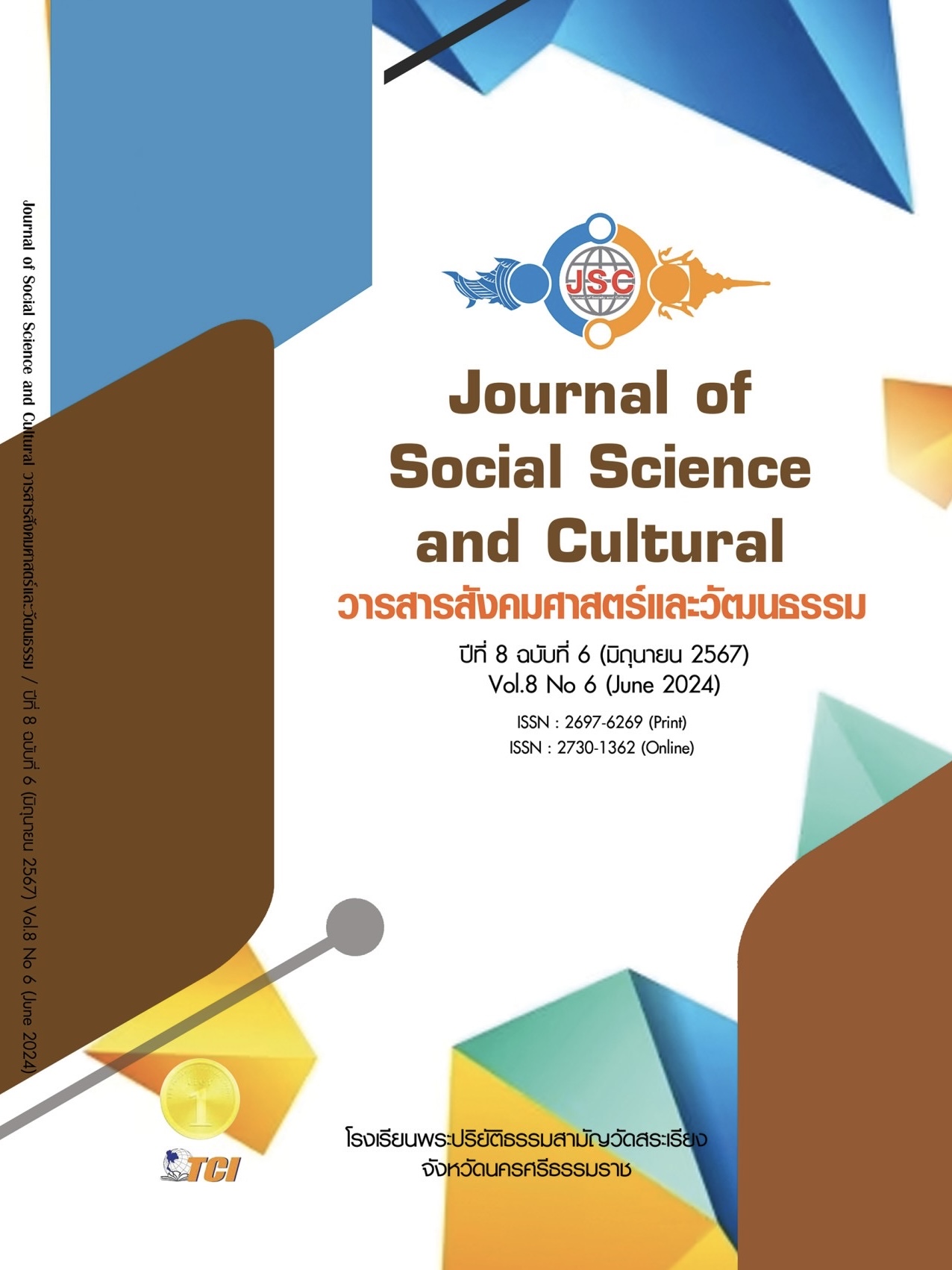THE CAUSAL FACTORS INFLUENCING THE BENEFITS OF HUMAN RESOURCE INFORMATION SYSTEMS AMONG THE EDUCATIONAL INSTITUTIONS IN THE GROUP OF RAJAMANGALA UNIVERSITY OF TECHNOLOGY
Main Article Content
Abstract
The objective of the causal factors influencing the benefits of human resource information systems among the educational institutions in the group of Rajamangala University is quantitative research. This research has two objectives: 1) to study factors that influence the benefits of human resource information systems in higher education institutions (Rajamangala University of Technology) 2) to examine the consistency of the causal relationship model influencing you. Benefits of human resource information systems and 3) Create a behavioral relationship model that is consistent with the benefits of the human resource information system in the sample group of higher education institutions in the Rajabhat University of Technology group of nine places. The sample group consisted of 500 administrators, teachers, academics, and personnel working in higher education institutions in the Rajamangala University of Technology group. This research was conducted using a random sampling method with known probability values using a multi-step method. Quantitative data were analyzed using structural equation modeling techniques. To check for construct validity. And confirmatory factor analysis to confirm the discovered theory and check the construct validity of the tool. The research results found that all 16 observed variables are interrelated. The correlation coefficient is statistically significant at the 0.01 level, and the correlation size is between 0.222 and 0.703. It shows that the factors that influence the benefits of human resource information systems in higher education institutions in the Rajamangala University of Technology group indicate that the human resource information system's organizational characteristics personal characteristics Influences the benefits of human resource information systems. Through the adjustment of the human resources information system. This is in accordance with all 7 assumptions and in line with the theory that explains the structural equation model of factors influencing the benefits of human resource information systems in higher education institutions in the Rajamangala University of Technology group. Therefore, in conclusion, it is consistent and harmonious. with the theoretical model set at an acceptable level.
Article Details
References
ณฐาพัชร์ วรพงศ์พัชร และคณะ. (2564). คุณลักษณะของผู้บริหารสถาบันอุดมศึกษาที่มีอิทธิพลต่อความทุ่มเทในการทำงานของบุคลากรทางการศึกษายุคไทยแลนด์. 4.0. วารสารบัณฑิตศึกษา มหาวิทยาลัยราชภัฏวไลยอลงกรณ์ในพระราชชูปถัมป์, 15(1), 54-65.
ถวัลย์ พอกประโคน. (2557). สภาพการบริหารงานโดยใช้เทคโนโลยีสารสนเทศในสถานศึกษา สังกัดสำนักงานเขตพื้นที่การศึกษาประถมศึกษาบุรีรัมย์ เขต 1. ใน วิทยานิพนธ์ครุศาสตรมหาบัณฑิต สาขาวิชาการบริหารการศึกษา. มหาวิทยาลัยราชภัฏบุรีรัมย์.
ภาศิริ เขตปิยรัตน์ และคณะ. (2556). การพัฒนารูปแบบความสัมพันธ์เชิงสาเหตุของปัจจัยที่มีอิทธิพลต่อผลการดำเนินงานของอุตสาหกรรมการส่งออกอัญมณีและเครื่องประดับไทย. วารสารบริหารธุรกิจเศรษฐศาสตร์และการสื่อสาร, 8(2), 99-113.
สถาพร สังข์ขาวสุทธิรักษ์. (2550). ปัจจัยที่จำแนกการเปลี่ยนแปลงทางการศึกษา ของสถานศึกษาขั้นพื้นฐาน. ใน ดุษฎีนิพนธ์หลักสูตรปรัชญาคุษฎีบัณฑิต สาขาวิชาการบริหารการศึกษา. มหาวิทยาลัยศิลปากร.
Bejjar, M. & Boujelbene, Y. (2013). The Impact of Information Systems on user Performance: An Exploratory Study. Journal of Knowledge Management, Economics and Information Technology, ScientificPapers.org, vol, 3(2), 1-10.
Hair, J. F. et al. (2014). AMOS covariance-based structural equation modeling (CB-SEM): Guidelines on its application as a marketing research tool. Brazilian Journal of Marketing, 13(2), 44-55.
Lisi, Y. I. (2012). Effect of different stem-cutting stage on yield and benefit of rape variety Qianyou 29. Journal article: Guizhou Agricultural Sciences, 1(8), 73-78.
Stacie, P. et al. (2013). Information systems success: The quest for the independent variables. Journal of Management Information Systems, 29(4), 7-62 .
Yaser, H. et al. (2014). The Role of Different Types of Information Systems In Business Organizations. International Journal of Research, 1(7), 1279-1286.
Yusi, H. E. & Wukui, W. (2024). BPM Software Adoption in Enterprises based on TOE Framework and IS Success Model. School of Economics & Management: Beijing Forestry University.


